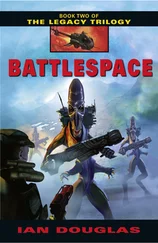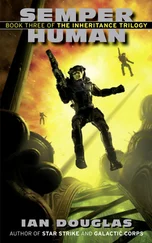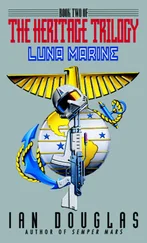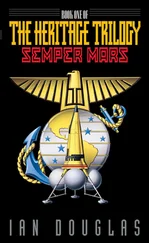Karyn Mendelson possessed within her coded matrix a very great deal of both the original Mendelson and of Koenig himself. And it was the Koenig analog in which the Internal Affairs officers were most interested.
“Anything?” one shadowy figure asked the other. They were deep in the nuke-shielded lower levels beneath the ConGov pyramid, perhaps three kilometers down and well out under the placid-mirrored waters of Lake Geneva itself.
“No,” the other said. He gestured vaguely at a wallscreen, which showed a graphic representing progress so far. There’d been very little. “This is going to take a while.”
“What are you trying?”
“Incoming call iterations. It’s cycling through at almost a million per second now.”
The first IA programmer gave a low whistle. “He’s got the top-of-the-line model, huh?”
“He’s a freakin’ rear admiral, fer Chrissakes. What did you expect?”
Within the computer in the console in front of them, a subroutine was emulating real life for the admiral—but at a vastly accelerated rate. A copy of his PA software was fielding incoming vid calls as Koenig, very quickly indeed. Eventually, the orderly presentation of the program would begin to break down, and other watchdog routines would snatch at what amounted to electronic shrapnel, saving it for later analyses.
They’d already destroyed a dozen copies of the PA software … but there were plenty more, and more could be created easily enough if these ran out.
And abruptly, the emulation stopped.
“What the hell happened?”
“Dunno. And what’s that ?”
On the large screen, a woman in a black Confederation naval uniform looked down at them. “Who are you?” she demanded. “What are you doing to me?”
One of the interrogators gave her a cool appraisal. “You’re Mendelson?” he asked.
The screen image morphed into Koenig, also in naval uniform, and looking angry. “This is the personal assistant of Rear Admiral Alexander Koenig,” it said. “And attempting to hack private PA software is illegal.”
“Department of Internal Affairs,” the interrogator replied. “We have authorization.”
“To do what? And by whose authority?”
The interrogator showed the AI behind the screen image his security code level. Possibly they could get what they needed by asking directly, if they could enlist the AI’s cooperation.
“We are trying to get a lead on where Admiral Koenig is taking CBG-18,” he said. “It is vital that we get in touch with him, and we’d hoped you might be able to help.”
“I was … he was at Alphekka when I was downloaded into a Sleipnir -class packet,” Koenig’s face said. “I have no idea what has happened with the fleet since I left it for Earth.”
A copy of a copy, its memories had been copied as well. It would think that it was the original electronic duplicate placed in the mail packet.
“You brought with you a list of over two hundred possible targets,” the interrogator said. “We think he must be headed for one of those. Can you tell us which one that might be?”
“No,” the electronic image on the screen said. “If Admiral Koenig had wanted you to know, I feel sure he would have told you in his final report.”
And as suddenly as Koenig’s image had appeared, it was gone, dissolving into a shrill hiss of white noise.
“Damn.”
“What happened?”
“The software … killed itself,” the interrogator said. “Electronic suicide.”
“It can’t kill itself if it’s not alive to begin with.”
But the interrogator wasn’t certain of that. Other iterations of Koenig’s software had switched themselves off when they’d discovered that he was tampering with them.
He loaded another copy.
“We’ll try again,” he said. “But I have a feeling it’s going to be a long night. …”
Koenig’s electronic persona seemed determined not to cooperate, and he could not figure out how to get past the program’s guardian aspect.
The interrogator was very good at what he did.
There had to be a way to break the thing. …
10 April 2405
In Alcubierre Space
Approaching HD 157950
98 light years from Earth
0840 hours, TFT
The star carrier America fell through darkness absolute.
Intense, artificially generated gravitational fields warped space tightly around the America , and no light could enter from the universe outside. While material objects like a spacecraft could not travel faster than light, there was no such prohibition about space. Indeed, in the earliest moments of the big bang, over 13 billion years before, newly born space had expanded with that initial burst of energy from two colliding branes considerably in excess of c .
And a ship embedded within that swiftly moving space could be carried along inside the gravitationally closed bubble at a pseudovelocity of nearly two light years per day.
America and her battlegroup had been traveling through the darkness within their separate bubbles for sixty-three days, now. And they were very nearly at the end of the first leg of their voyage.
Rear Admiral Alexander Koenig, the battlegroup’s CO, was seated in America ’s command lounge. The room, broad and circular, projected the surrounding vista across the gently curved overhead when the ship was in normal space, showing the unmoving panorama of stars outside. Within the confines of metaspace, however, the interior of the fast-moving bubble of enclosed space-time, the lightless Void was at arm’s length. Currently, it was displaying the blue, cloud-scattered skies of Earth.
Two men appeared in the lounge entryway. “You wanted to see us, Admiral?”
Captain Randolph Buchanan was America ’s commanding officer, tall, long-faced, with perpetual worry lines. Captain Barry Wizewski was the CO of the star carrier’s space-fighter wing commander, her CAG—an ancient acronym derived from “Commander, Air Group.”
“I did. C’mon in.”
“Staying off the record, sir?” Wizewski said, smiling.
“Yes, actually. I don’t expect to salvage my career after this, but I’ll be damned if I’ll give them the rope to hang me … or anything on the record to drag you into this.”
Anything discussed on either America ’s main bridge or her flag bridge was recorded, as were conversations in the Admiral’s Office and all other working compartments on board ship. Virtual meetings held in-head were recorded as well by the ship AIs responsible for moderating all electronic communications.
“You’re doing the right thing, Admiral,” Buchanan told him, taking one of the low, round seats opposite Koenig.
“Thanks, Randy. But we both know the Senate’s never going to stand for this kind of insubordination. They can’t, not without looking like they’re not in control.”
“The Confederation Senate, no,” Buchanan replied. “Things may be different in Columbus, D.C.”
“Maybe. But it’s Geneva that’s calling the shots, and Columbus will have to go along.”
Koenig had never been entirely comfortable with his position as commanding officer of a Confederation Star Navy battlegroup. The star carrier America and her crew were USNA—the United States of North America—but they’d been reassigned along with most of the other ships of CBG-18 to the service of the Terran Confederation.
The problem, Koenig thought wryly, was that while the majority of Confederation naval officers—including the Joint Chiefs of Staff—were USNA citizens, the majority of the Confederation’s politicians were not. It was the Pan-Europeans, the Empire of Brazil, the South American EAS, the North India Federation, and others who were determining Confed policy in Geneva. Those nation-states that tended to support the USNA’s initiatives in the war with the Sh’daar were badly outnumbered—Russia, the off-world colonies, and Japan.
Читать дальше












